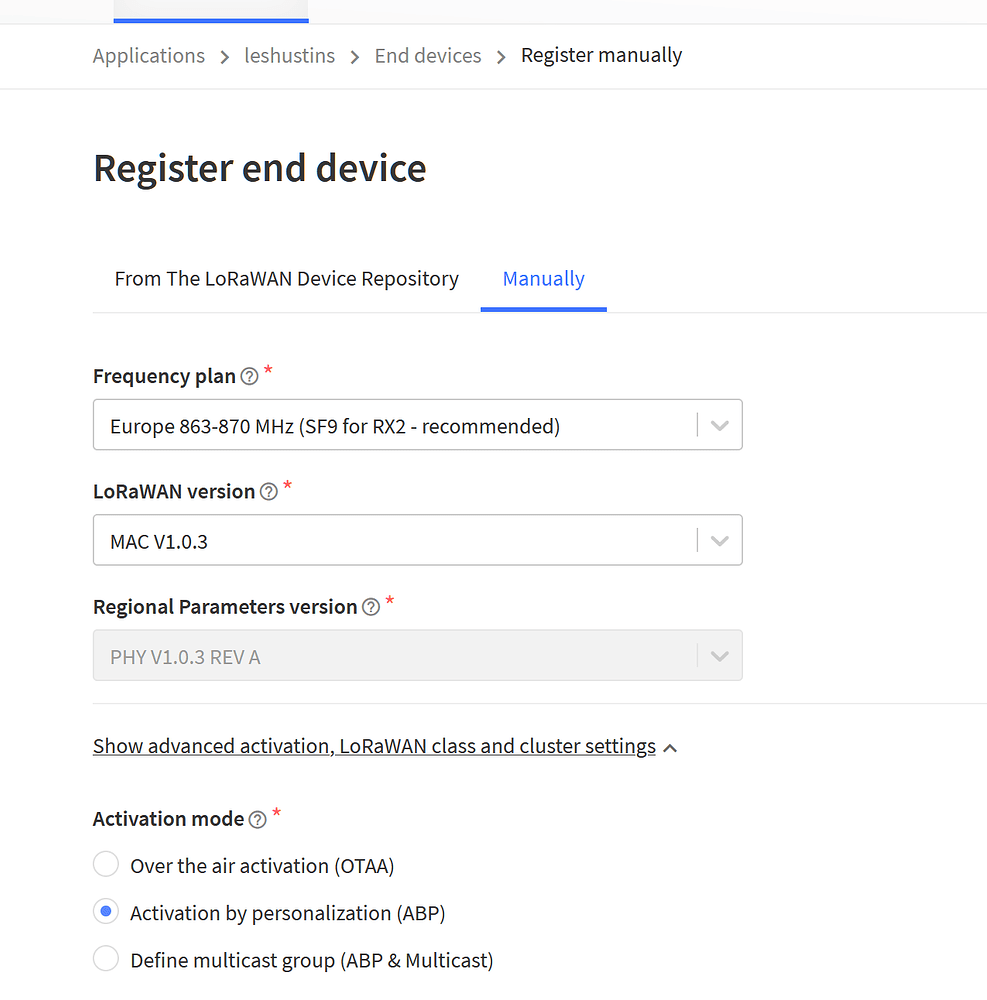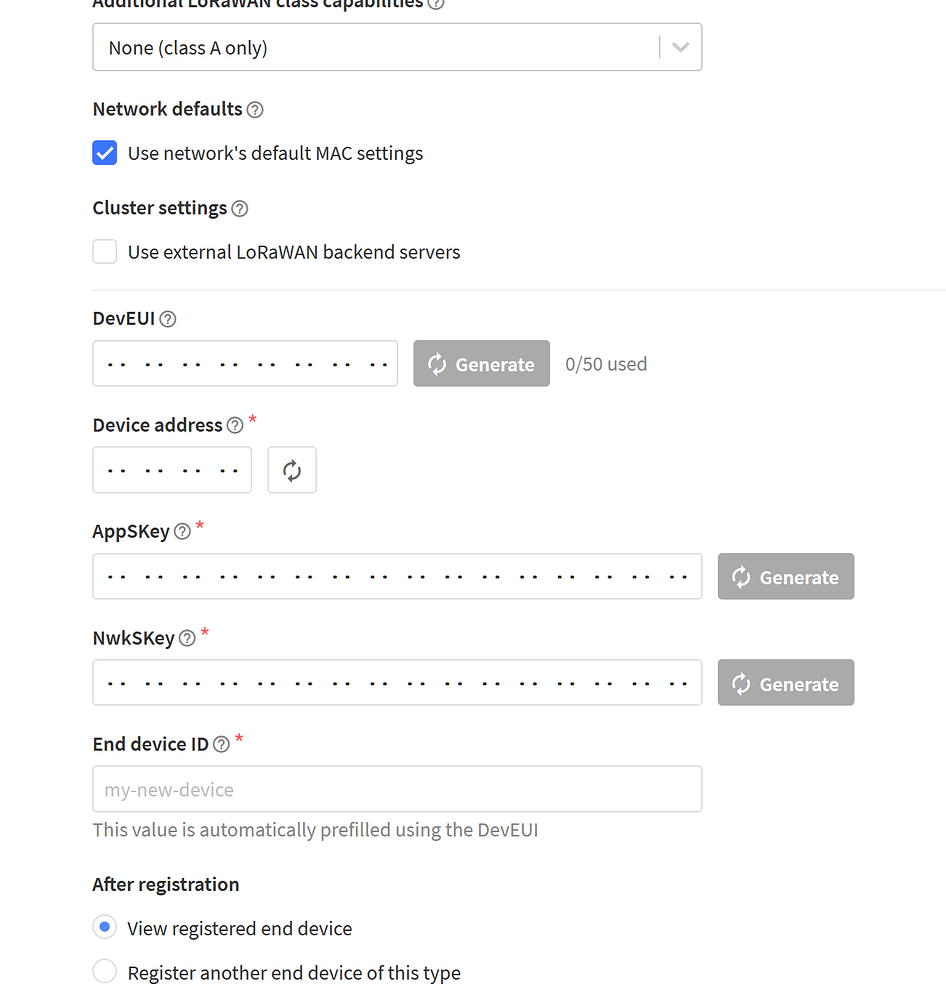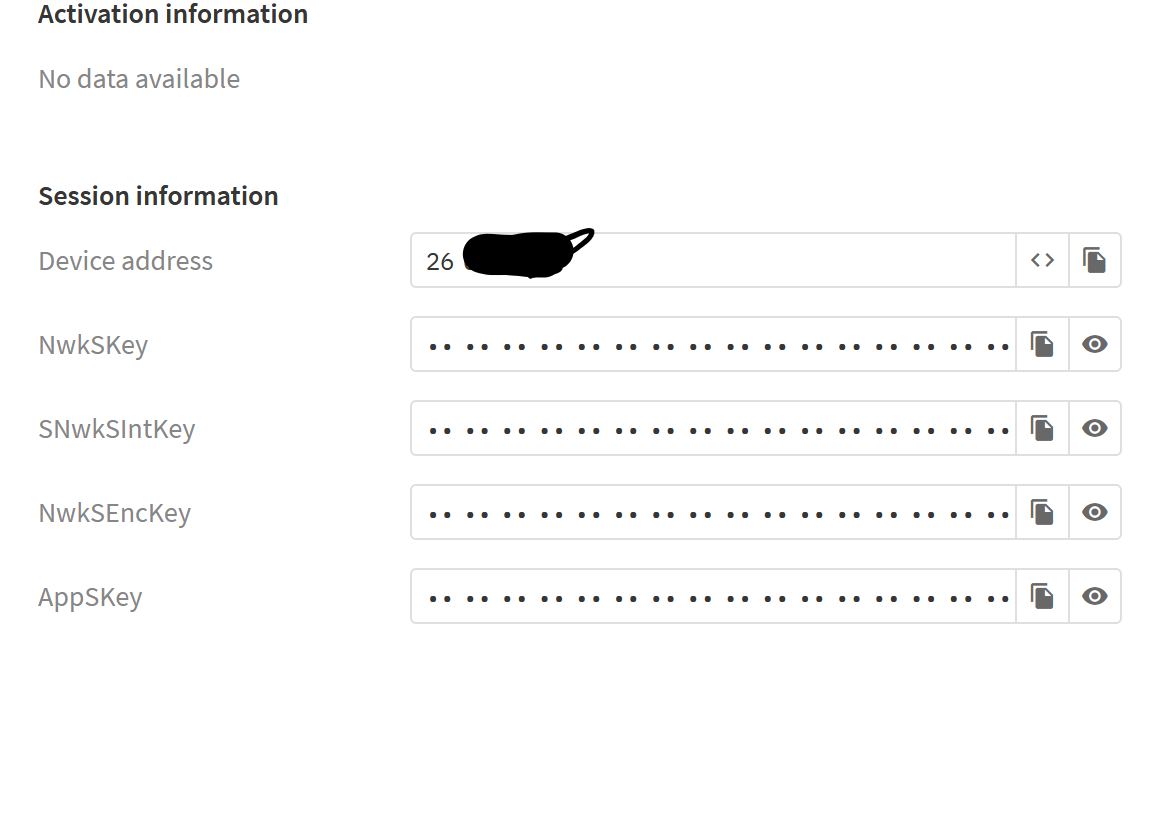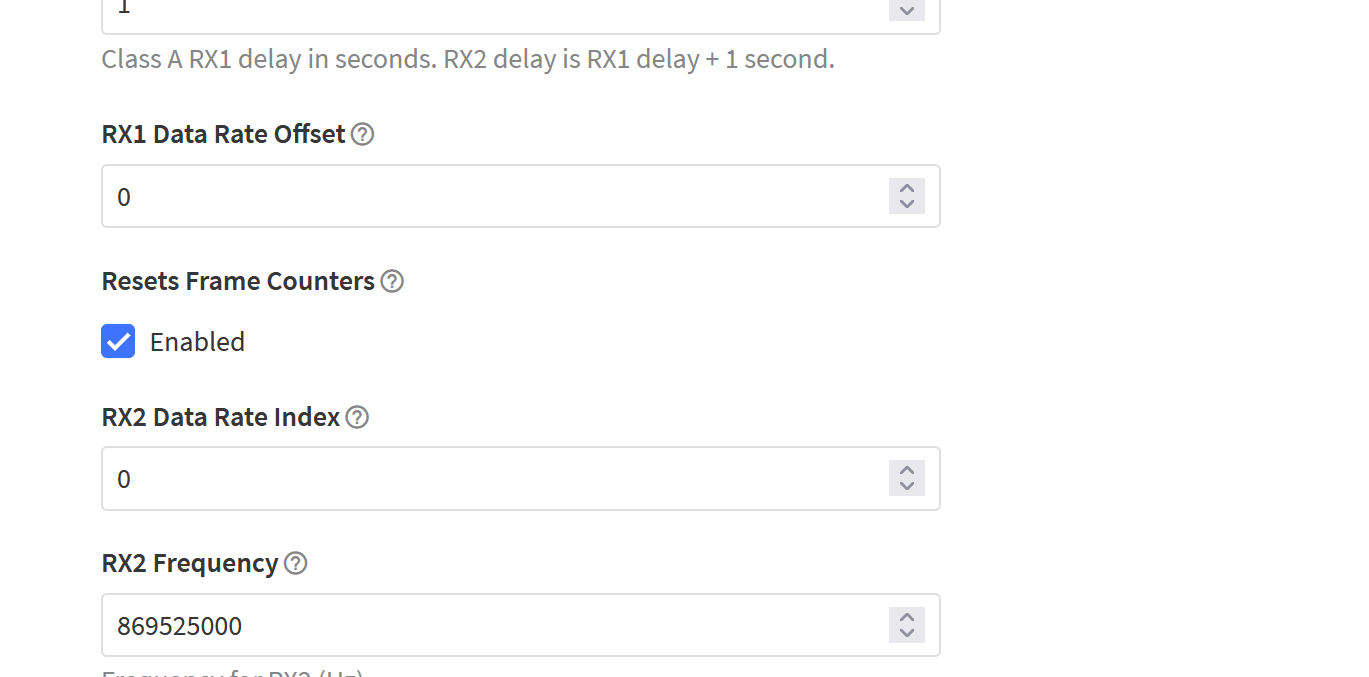Hello,
Since Imigrated to V3, I registed my devise with OTAA. But one of my devise give me some trouble, and I already experience that with V2.
As it is not an important devise, I registed it with ABP. I am a bit suprise because wen I switch it on, devise devise run well and my console printed that the data has been sent.
633067: EV_TXCOMPLETE (includes waiting for RX windows)
COMPLETED in 2123ms
I have two Gateway close to my devise and both work well, and seen in V3 console
But now when I go to TTN V3 console, the devise is not seen.
I wonder, if I regised well my devise in my TTN
In the following window
- I kept empty the devEUI field
- for Devise Address, AppSKey and NwkSKey, I cliked in Generate buton.
- I gave an id to my devise as st-20
When done, I went to my V3 console, and I selected my new devise. From the overview tab
- copied the DevAddress
- On NwkSKey, I clicked on the eye, then the the two arrow, and I copied the msb number
- I did the same for the AppSKey
Then I pasted in my ino file. as the following (I changed my keys with some 00 to keep it secret ![]() )
)
//ST-20
static const u4_t DEVADDR = 0x26000000; // <-- Change this address for every node!
static const PROGMEM u1_t NWKSKEY[16] = { 0x00, 0x00, 0x00, 0x00, 0x00, 0x00, 0x74, 0x02, 0x44, 0x0F, 0xA2, 0xBF, 0xBE, 0x87, 0x00, 0x00 };
static const u1_t PROGMEM APPSKEY[16] = { 0x00, 0x00, 0x00, 0x00, 0x00, 0x00, 0xAD, 0x34, 0x2D, 0x95, 0x59, 0x1B, 0x77, 0xB5, 0x00, 0x00 };
I ma used to do that, then I wonder why my devise is not seen at V3 console. As it the first time I registed a devise in the V3 console, I wonder if I make some thing wrong, following the picture I attached.
I am annoyed, I have to move the devise into the field today… ![]()
Many thanks for your clarification
Cheers




